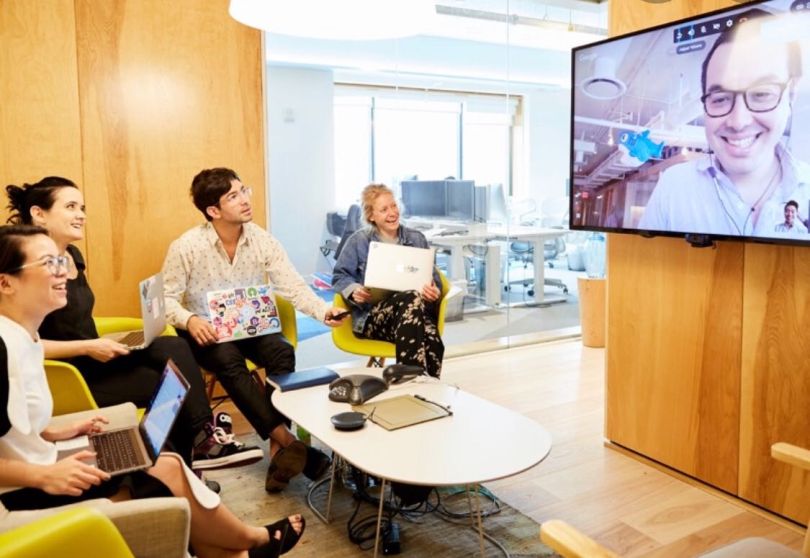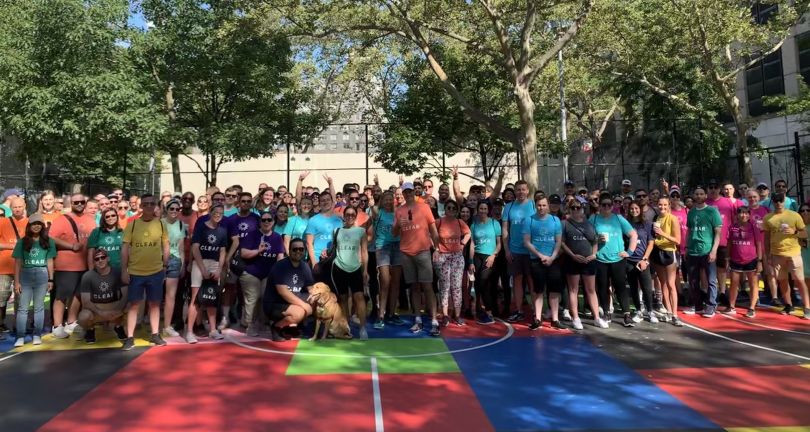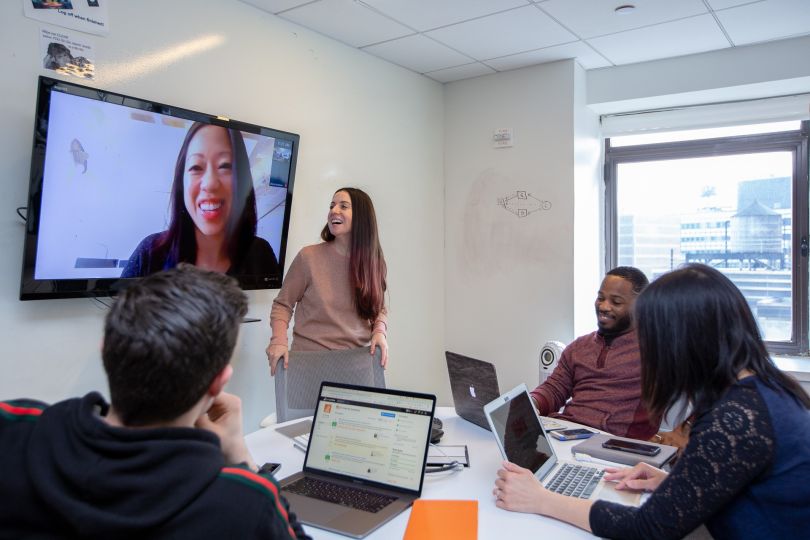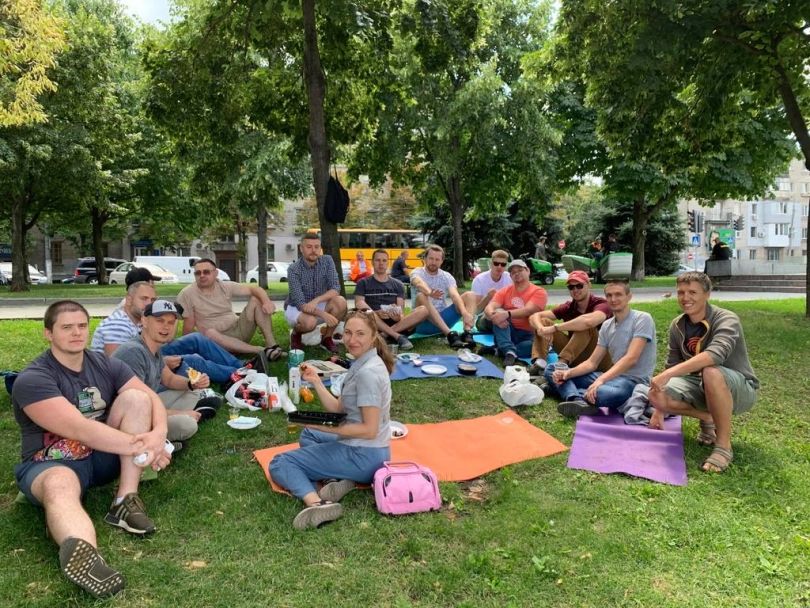Despite it being an agreed-upon imperfect system (just ask your grandmother), the internet has provided us with professional luxuries and resources we wouldn’t have been able to even dream up years ago.
One of those luxuries, of course, is the ability for companies to hire remote workers, as well as the ability for employees to contribute to the workforce from around the globe. Not only does this model increase the talent pool tenfold, it encourages a culture of diverse collaboration that would otherwise not exist.
We recently spoke to four managers about how they unite their team despite hurdles like time differences and technical malfunctions, and why they are better for it.

A computer screen won’t stop Director of Engineering Suzanne Pherigo from connecting with her teammates at DigitalOcean on a personal level. She told us that managing a dispersed team means spending time on digital communication infrastructure to make sure employees have dedicated spaces for chatting the same way they ordinarily might around the water cooler. That’s not too difficult for the team at DigitalOcean, who’s all about software development in the cloud.
Describe your remote team.
As a company, we have always embraced the remote culture because we want to hire the best people, regardless of where they live. And we want people to be able to live the lives that they want, whether that’s in New York, Minnesota or Colorado. One of the teams I manage offers an interesting dynamic since it includes both in-office and remote employees. This is a team of software engineers working on DigitalOcean’s billing system. Two out of the six work out of our New York office. The rest of us, myself included, are remote across the U.S. (so timezone issues aren’t too bad).
What team-building activities do you do with your remote team?
I am a firm believer in remote teams. But I also believe that personal connection is very important. We get together a few times a year as a team so we can build and strengthen our personal relationships with one another and have fun together. This helps us all work better as a team when we are remote.
We also hold standups three times a week and have our own team Slack channel that is not just about work. We try to have “chatter time” a few times a month, which allows us to have break room conversations over video. The more you know someone as a person, the easier and more fulfilling it is to work with them as a teammate. Therefore, we make a point to find time to make personal connections even when we aren’t all in the same room.
Not letting things fester is critical!’’
How else do you ensure your remote team is engaged, challenged and successful?
Video is an amazing resource for remote teams. We hold all of our meetings over video. It is so much more engaging than just talking on the phone or communicating via email. I work to understand what challenges excite each individual and try to craft their work to fit their personal desires. This, along with paired programming, mentoring, as well as work demos and deep dives into specific technical areas, all help keep the team motivated and productive.
Also, addressing any issues quickly is even more important with remote teams because you do miss out on body language and other in-person signs. So not letting things fester is critical!

The CLEAR team is working on some Black Mirror type technical advancements...minus the dramatic meltdowns and time travel (at least for now). Their software uses your eyes and fingerprints to confirm your identity so that bag checks at stadiums and pat-downs at airports are uncomfortable elements of the past. We spoke with VP of Technology Operations Paul Parker about how they bring their remote team together.
Describe your remote team.
The technology operations team consists of two distinct functions, corporate IT and field technology. There are 20 team members, of which 12 are working remotely across the United States. These remote workers (from operations managers and field technology) are responsible for the performance and operations of CLEAR technology in their assigned region, which includes airports, sports and events/partnerships.
What team-building activities do you do with your remote team?
Once a year, the team meets offsite for a three-day session, which includes a reflection of what’s gone well and what hasn’t, opportunities for the year ahead and strategic plan creation. This allows everyone to contribute to our future success. When the work ends, the team dines together and participates in some fun activities that vary from cooking together to bowling.
Once a year, the team meets offsite for a three-day session...’’
How else do you ensure your remote team is engaged, challenged and successful?
The team meets for a daily standup (video is mandatory!) to discuss the day ahead. Weekly meetings include brainstorming processes than can be eliminated or automated to provide the technical team time back to work on the stuff they really enjoy (not resetting passwords). Team members are urged to give each other timely and meaningful feedback and share their experiences (both good and bad) with the rest of the group.

It should come as no surprise that Stack Overflow’s mantra for remote work centers around the idea of empowerment. After all, that’s what their product is also about: empowering developers to do their best work by providing a platform for information sharing. We recently spoke with Director of Design Kristina Lustig about how she increases engagement and encourages critical evaluation on a week-by-week basis.
Describe your remote team.
I manage the design and research teams. Almost everyone on my team is remote. Those people fill product design roles, UX research roles, brand design roles, as well as team leads who are managing other people. Being able to hire from wherever helps us make sure we’re bringing in the exact right people for the jobs we’re hiring for. Because remote work enables a better work-life balance, we can hire folks who are prioritizing that.
Almost everyone on my team is remote.’’
What team-building activities do you do with your remote team?
We have a weekly team meeting where a different person each week runs an activity for the team. It’s very rarely work-related. Sometimes it’s a question of the week; sometimes it’s a silly drawing or design exercise. Activities like that really help a remote design team feel closer to each other.
We also have weekly design critiques where we all get together in a room and talk about our work. I think that kind of environment wouldn’t work if we hadn’t already spent a lot of time and effort establishing trust and good relationships with each other, because critique is inherently about offering up the thing that you’ve created for critical feedback from your peers.
How else do you ensure your remote team is engaged, challenged and successful?
Trusting the people on my team to do their work and letting them control how they’re engaging with it makes them more engaged overall. Also, I like to find opportunities for the people on my team to stretch their skills in ways they maybe haven’t before or that they may want to.
A lot of successful teamwork comes down to communication, so we make sure that they have everything they need to do their jobs. We make sure that they’re getting timely feedback, both positive and critical.

When you’re working with people on the other side of the world, there’s no time for communication errors. This is especially true for Smartling, a translation service that helps brands succeed at a global scale. Jeremy Shankle, web applications team lead, told us how their team walks the walk.
Describe your remote team.
My team is split almost evenly between three offices. On my team, we currently have three developers in New York, four in Dnipro, Ukraine, and two in Kiev, Ukraine. We are currently hiring for additional developers in New York and Kiev. The other engineering teams at Smartling have similar structures.
What team building activities do you do with your remote team?
Our most impactful team-building initiative is sending our engineers from all our offices to visit all the other offices. It is very valuable to have the opportunity to work side by side with your teammates to understand what gaps we have in understanding. More importantly, this creates the chance to sit down for a coffee or lunch and get to know more about each other in a way that translates into stronger working relationships when we return to our home offices.
Being a distributed team has to be baked into every part of your culture.’’
How else do you ensure your remote team is engaged, challenged and successful?
There’s no simple, one-time solution. Being a distributed team has to be baked into every part of your culture. Constant communication and trust-building is necessary for success. We have a seven-hour time difference between our New York and Ukraine offices, which does mean we have the ability to work together three to five hours a day. We use text-based communication some, but we often very quickly switch to audio or video calls to make sure we really understand each others perspectives on any given issue.







